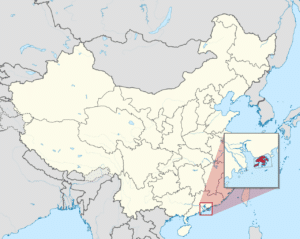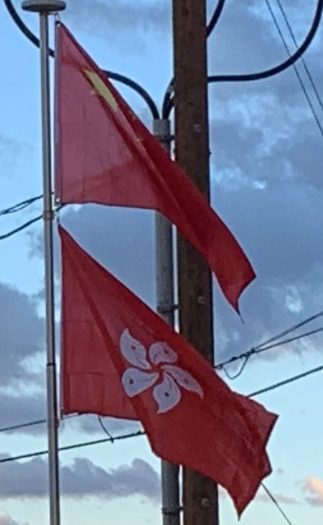Introduction:
Hong Kong, officially the Hong Kong Special Administrative Region of the People’s Republic of China (HKSAR), is a special administrative region on the eastern side of the Pearl River estuary in southern China. With over 7.4 million people of various nationalities in a 1,104-square-kilometre (426 sq mi) territory, Hong Kong is one of the most densely populated places in the world.
Hong Kong became a colony of the British Empire after Qing China ceded Hong Kong Island at the end of the First Opium War in 1842. The colony expanded to the Kowloon Peninsula in 1860 after the Second Opium War, and was further extended when Britain obtained a 99-year lease of the New Territories in 1898. The territory was returned to China in 1997. As a special administrative region, Hong Kong maintains separate governing and economic systems from that of mainland China under the principle of “one country, two systems“.

Originally a sparsely populated area of farming and fishing villages, the territory has become one of the world’s most significant financial centers and commercial ports. It is the world’s tenth-largest exporter and ninth-largest importer, and its legal tender (the Hong Kong dollar) is the world’s 9th-most traded currency (as of 2019). Hong Kong hosts the largest concentration of ultra high-net-worth individuals of any city in the world. Although the city has one of the highest per capita incomes in the world, there is severe income inequality.
Hong Kong is a highly developed territory, ranking seventh on the UN Human Development Index. The city has the largest number of skyscrapers of any city in the world and its residents have some of the longest life expectancies in the world. Over 90% of its population uses public transportation. Air pollution has resulted in a high level of atmospheric particulates in the city.
Etymology:
The name of the territory, first spelled “He-Ong-Kong” in 1780, originally referred to a small inlet located between Aberdeen Island and the southern coast of Hong Kong Island. Aberdeen was an initial point of contact between British sailors and local fishermen. Although the source of the romanized name is unknown, it is generally believed to be an early phonetic rendering of the Cantonese pronunciation hēung góng. The name translates as “fragrant harbor” or “incense harbor”. “Fragrant” may refer to the sweet taste of the harbor’s freshwater influx from the Pearl River or to the odor from incense factories lining the coast of northern Kowloon. The incense was stored near Aberdeen Harbour for export before Victoria Harbour developed. Sir John Davis (the second colonial governor) offered an alternative origin; Davis said that the name derived from “Hoong-keang” (“red torrent”), reflecting the color of soil over which a waterfall on the island flowed.

The simplified name Hong Kong was frequently used by 1810. The name was also commonly written as the single word Hongkong until 1926, when the government officially adopted the two-word name. Some corporations founded during the early colonial era still keep this name, including Hongkong Land, Hongkong Electric Company, Hongkong and Shanghai Hotels and the Hongkong and Shanghai Banking Corporation (HSBC).
History:
The region is first known to have been occupied by humans during the Neolithic period, about 6,000 years ago. Early Hong Kong settlers were a semi-coastal people who migrated from inland and brought knowledge of rice cultivation. The Qin dynasty incorporated the Hong Kong area into China for the first time in 214 BCE, after conquering the indigenous Baiyue. The region was consolidated under the Nanyue kingdom (a predecessor state of Vietnam) after the Qin collapse, and recaptured by China after the Han conquest. During the Mongol conquest of China in the 13th century, the Southern Song court was briefly located in modern-day Kowloon City (the Sung Wong Toi site) before its final defeat in the 1279 Battle of Yamen. By the end of the Yuan dynasty, seven large families had settled in the region and owned most of the land. Settlers from nearby provinces migrated to Kowloon throughout the Ming dynasty.
